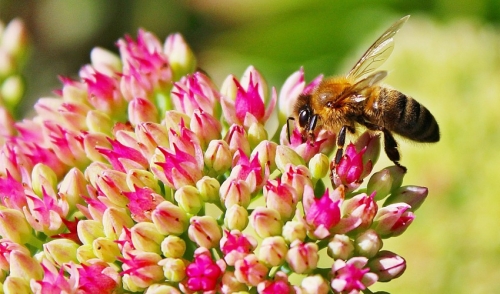{article.name} Monthly Blog Articles
WE DELIVER
Peterborough, NH: 603-924-6801 Brattleboro, VT: 802-254-8755 Walpole, NH: 603-756-9400 Hillsboro, NH: 603-464-3755 Milford, NH: 603-673-1669 Keene, NH: 603-357-5720Beneficial Bugs: Insects You Actually Want to Keep Around!

- Share this:
- Share on Facebook
- Pin on Pinterest
- Tweet on Twitter
When you think of summer and insects, you think of the nuisance of gnats flying around your face, the miniature chainsaw buzz of them landing in your ears, and several months of itchy, red welts from mosquitos making your vacation less than picturesque. Well, these things are certainly true to some degree, but there are some important insects that, without which, would create an even worse problem .
The Minute Pirate Bug is an insect that is commonly used for biological control purposes. They are 2-5 mm long and feed on pests such as spider mites, thrips, and other small creatures that negatively impact plant life. The Geocoris, or Big-Eyed Bug is another beneficial bug who preys largely on smaller insects that pose a threat to plant life. They feed on mites, insect eggs, pink bollworms and cabbage loopers. Without this little bug, your garden greens would loom more like swiss cheese from insects, and you would have one or two more mosquito bites than you wish you'd gotten.
The Green Lacewing, apart from being a beautiful and delicate insect, is yet another employed for pest control, largely in agricultural settings. Their wingspan can reach up to 65 mm and when handled, can release a vile odor which had given them the nickname “stinkfly.” Their use in biological pest control is limited mostly to their consumption of small insects, mites, and aphids, that can harm crops.
The Trichogramma, or Stingless Wasp, is a species of wasp that substantially mitigates the damage done by moths of various species through population control. You remember Grandma's holey, moth eaten clothes closet? Well, the Stingless Wasp controls the population of the Cotton Bollworm, Coddling Moth, Lightbrown Apple Moth, and European Corn Borer, all responsible for chewing through things that you don't necessarily want to be chewed through.
So, if you happen to come across an insect, that looks scary, don't be so prompt in squashing it. Go inside and look it up. It could be protecting you, your garden, and grandma's dress from 1957 from other, more intrusive insects.



Comments